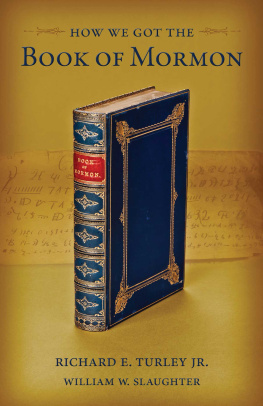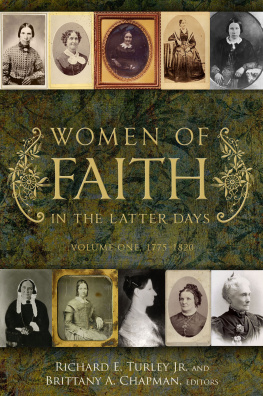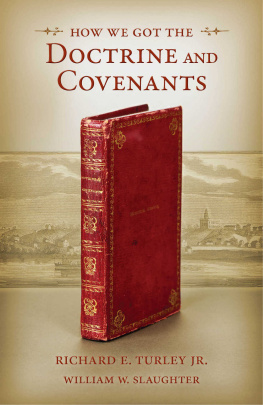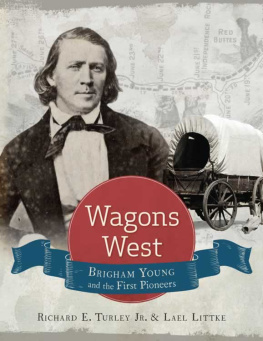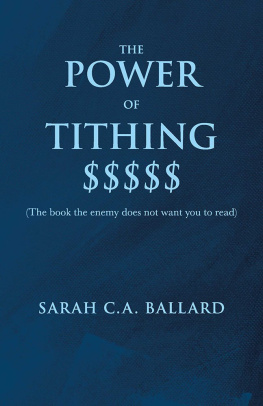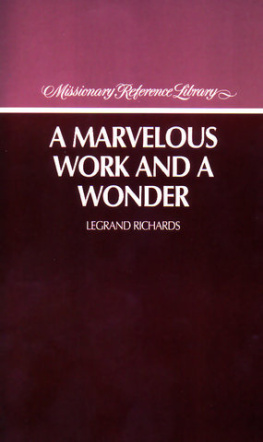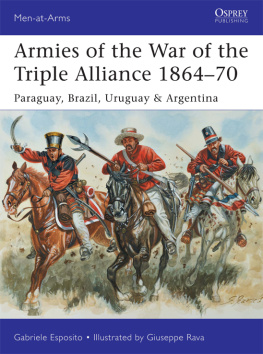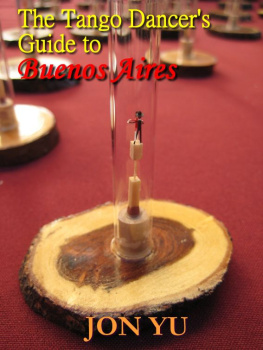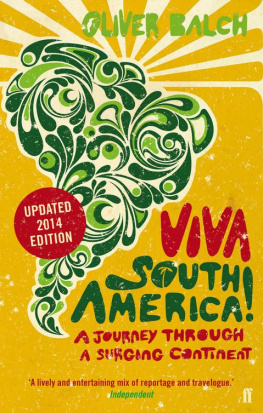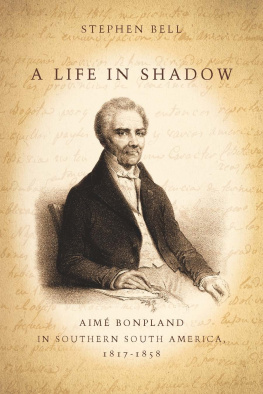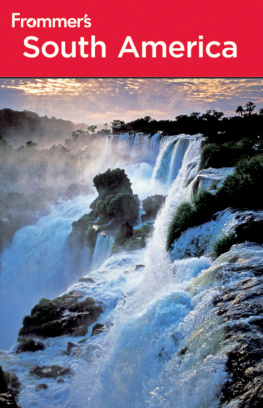Preface
During my eight-year tenure as assistant Church historian and recorder for The Church of Jesus Christ of Latter-day Saints in Salt Lake City, Utah, I taught a series of classes on the Churchs global history for staff of the Church History Department. When I was teaching a section on the history of the Latter-day Saints in South America, Clinton D. Christensen, a student in the class, made me aware of a recent acquisition.
In November 2013, Clint was invited to the home of Lynn S. Richards Jr., a grandson of Apostle Stephen L Richards. The home was ready to be sold, and the family papers were boxed in the garage. Clint discovered many historical treasures, including papers of Elder Stephen L Richards, his wife Irene, and even the portraits of Irenes grandparents George A. and Bathsheba Smith that had hung in the celestial room of the Nauvoo Temple in 1846. Among Irenes papers was a book of letters she wrote detailing her husbands three-month apostolic tour of South America in 1948. As luck would have it, Clint acquired the papers and brought Irenes letter book to the Church history class within a week of our discussion about Stephen L Richardss trip.
Given the importance of Stephen L and Irene Merrill Smith Richardss visit to Argentina, Uruguay, and Brazil in the history of the Church in South America, Clint and I decided to coauthor a volume on their travels, which marked a turning point for Latter-day Saints on that continent. Bookending the chapters on the experiences of Elder and Sister Richards are a prologue and an epilogue giving an overview of the history of the Church in South America up to 1948 and then from 1948 to 2018. Because a complete history of the Church in South America has yet to be written, the prologue and epilogue help fill a need by providing a solid introduction to the much larger story of Latin American Church history. Enhancing this historical overview is a timeline of key events in the history of the Church in Latin America.
The travel chapters include documents from Elder and Sister Richards, mission presidents, missionaries, mission records, journalists, and, to a lesser extent, local Church members. All letters replicate the originals, including nonstandard spellings and the omission of diacritical marks in Spanish and Portuguese, with the exception of spacing and other formatting details that have been adjusted for improved readability and presentation. Each documentary section begins with a daily summary describing the events of the apostolic tour followed by related documents containing bracketed clarifications and footnotes where deemed helpful. For space reasons, footnote references to the Church History Library in Salt Lake City, Utah, have been abbreviated to CHL.
We are particularly grateful to my administrative assistant, Andrea Maxfield, and to Eileen Jenkins and Gretchen Becker, who prepared, typed, and reviewed the documents. Alison Gainer, Andrea Snarr, and Dan Holliday helped with initial editing of the manuscript. We thank the team at BYUs Religious Studies Center: publications director Scott C. Esplin; project editor Don L. Brugger and his assistants Ashlin Awerkamp, Sharai McGill, and Petra Javadi-Evans; production supervisor Brent R. Nordgren; and designer/typesetter Emily V. Strong. Gratitude also goes to the staff and senior missionaries of the Church History Department for their generous help: Matt Godfrey, Michael Landon, Matt Geilman, Jeremy Talmage, Jeff Crossley, Elena Lowe, and Richard and Rosalie Jones. LaMond Tullis and Mark Grover provided insightful reviews of the chapters on the history of the Church in Latin America. We are also grateful for the cooperation of the families of South American returned missionaries and for a few earlier missionaries who remember the Richardses visit in 1948 and have shared their memories, scrapbooks, and journals with us while we prepared this book.
We hope that readers of this volume will not only get a clear sense of the history of the Latter-day Saints during the time of the Richardses visit but will also see how their travels became a milestone in the development of what is now a multimillion-member church in South America.
Richard E. Turley Jr. with Clinton D. Christensen
Note
.The paintings are on display in the Heavens Are Open exhibit at the Church History Museum in Salt Lake City, Utah.
Prologue
Latter-day Saint
Missionary Efforts in South America, 18511947
An Ongoing Charge to Preach the Gospel Worldwide
In concluding his forty-day postresurrection ministry, Jesus Christ commanded his disciples:
Go ye therefore, and teach all nations, baptizing them in the name of the Father, and of the Son, and of the Holy Ghost: teaching them to observe all things whatsoever I have commanded you: and, lo, I am with you alway, even unto the end of the world. Amen. (Matthew 28:1920)
When the American prophet Joseph Smith and his associates formally organized the Church of Christ on April 6, 1830, they understood it to be the restoration of Christs ancient church and took seriously the New Testament charge to take the gospel to all nations and peoples.
The Prophet Joseph Smith translated an ancient book of scripture that became known as the Book of Mormon. Before the book became available for sale in March 1830, believers with access to press galleys took portions for others to read, and a local journalist with after-hours access to the printshop began pirating major segments of the volume in his own newspaper.
Early efforts to take this restored gospel to all people included famous missionary forays by Smiths younger brother Samuel. His labors led to the conversion of Brigham Young, the man who would succeed Smith after the founding prophets death at the hands of vigilantes in 1844.
Early Missionary Interest in South America
One of the most famous efforts to spread the latter-day gospel occurred just months after the Churchs organization when a revelation received by Joseph Smith called his closest associate in the work, Oliver Cowdery, and ultimately three companions to preach to native peoples of the Americas.
A Call to Teach Native Peoples
One of Cowderys companions was Parley P. Pratt, later dubbed by biographers the Apostle Paul of Mormonism.
The Latter-day Saint missionaries soon found themselves forced out of Indian territory by government agents tasked with protecting native peoples from the kind of exploitation that had marked centuries of interaction with colonial Europeans. But the mission journey was not a total failure: they found great success among Pratts former associates in Ohio, many of whom joined the fledging Church.
Parley P. Pratts 1851 Journey to Chile
Pratt never forgot his original charge, and when he followed Brigham Young west to what became Utah and received responsibility over the Churchs new mission in the Pacific, he studied Spanish and made plans to take the Latter-day Saint message to the native peoples of South America whose nations bordered the Pacific Ocean. To that end, Pratt left in 1851 on a cargo ship for Chile, accompanied by two companions: his ailing, pregnant wife Phoebe Soper Pratt and Rufus C. Allen.


